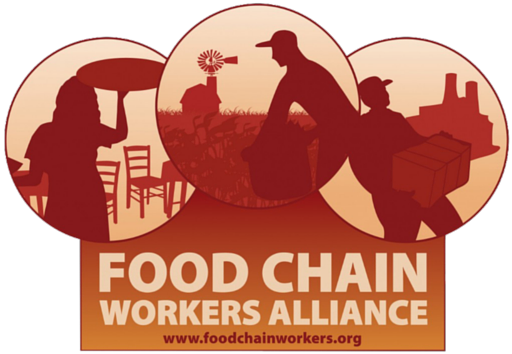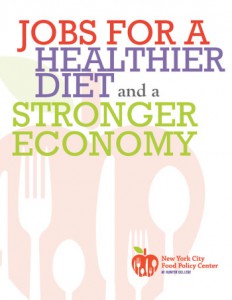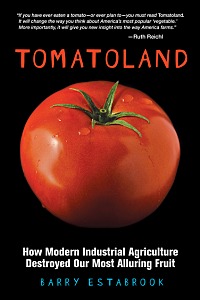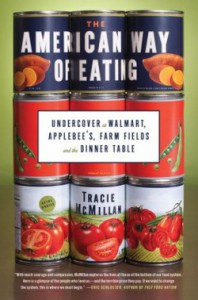No Piece of the Pie: U.S. Food Workers in 2016
In honor of International Food Workers Week, Food Chain Workers Alliance has released its new report: No Piece of the Pie: U.S. Food Workers in 2016.
The U.S. food system has grown by 1.5 million more workers in the past five years and continues to be the largest employer in the 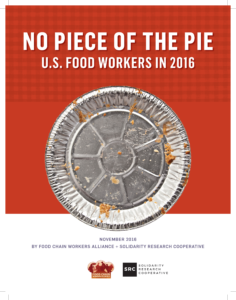 country–employing a total of 21.5 million workers. That’s 14%, or 1 out of every 7 workers, of the nation’s workforce. At the same time, the U.S. food system is the worst employer in the country in terms of wages and working conditions, paying the lowest hourly median wage of $10. This leads to a higher rate of food insecurity for food workers compared to workers in all other industries. In fact, food workers use food stamps (SNAP benefits) at over the double the rate of all other US workers.
country–employing a total of 21.5 million workers. That’s 14%, or 1 out of every 7 workers, of the nation’s workforce. At the same time, the U.S. food system is the worst employer in the country in terms of wages and working conditions, paying the lowest hourly median wage of $10. This leads to a higher rate of food insecurity for food workers compared to workers in all other industries. In fact, food workers use food stamps (SNAP benefits) at over the double the rate of all other US workers.
No Piece of the Pie also highlights pay inequity, particularly among worker of color. Women workers of color are paid much less than white men in the food system–less than what they were paid in 2010.
For more findings, stories from food workers, and recommendations for policy makers and consumers, download the full report and the executive summary here. The report is a result of a collaboration between the Food Chain Workers Alliance and Solidarity Research Cooperative.
“The Hands That Feed Us: Challenges and Opportunities for Workers Along the Food Chain”
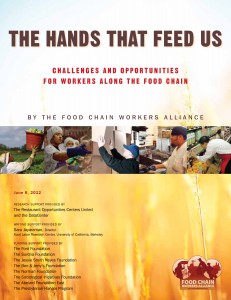 The Food Chain Workers Alliance’s unprecedented, comprehensive report looks at wages and working conditions of workers across the entire food chain – a sector that employs 20 million people in the U.S., comprising one-sixth of the nation’s workforce. The Hands That Feed Us is based on nearly 700 surveys and interviews with workers and employers in food production, processing, distribution, retail and service. Click here to read a summary of key findings from the report. You can download the full report, as well as the executive summary in English, Spanish, and traditional Chinese characters.
The Food Chain Workers Alliance’s unprecedented, comprehensive report looks at wages and working conditions of workers across the entire food chain – a sector that employs 20 million people in the U.S., comprising one-sixth of the nation’s workforce. The Hands That Feed Us is based on nearly 700 surveys and interviews with workers and employers in food production, processing, distribution, retail and service. Click here to read a summary of key findings from the report. You can download the full report, as well as the executive summary in English, Spanish, and traditional Chinese characters.
“Food Insecurity of Restaurant Workers“
 This report by FCWA, Restaurant Opportunities Center of New York, Restaurant Opportunities Center of the Bay, and Food First is the first comprehensive look at food security and employment conditions of workers in the restaurant industry.
This report by FCWA, Restaurant Opportunities Center of New York, Restaurant Opportunities Center of the Bay, and Food First is the first comprehensive look at food security and employment conditions of workers in the restaurant industry.
The report, based on over 280 surveys and interviews with restaurant workers in New York City and the San Francisco Bay Area, highlights the crucial ways in which restaurant workers’ employment conditions affect their ability to feed themselves.
Some of the key findings:
- Twice as many restaurant workers reported being food insecure compared to the overall U.S. population, the New York City population, and the San Francisco Bay Area population.
- Workers in the San Francisco Bay Area were 17% less likely overall to be food insecure than those in New York City.
- Compared to documented immigrants, undocumented immigrants were about 24% more likely to experience food insecurity.
- Tipped workers in NYC were 30% more likely to be food insecure than their non-tipped counterparts.
- Bay Area restaurant workers who served organic or “sustainable” ingredients were 22% more likely to be food insecure compared to other Bay Area restaurant workers.
“A Dime a Day: The Impact of the Miller/Harkin Minimum Wage Proposal on the Price of Food“
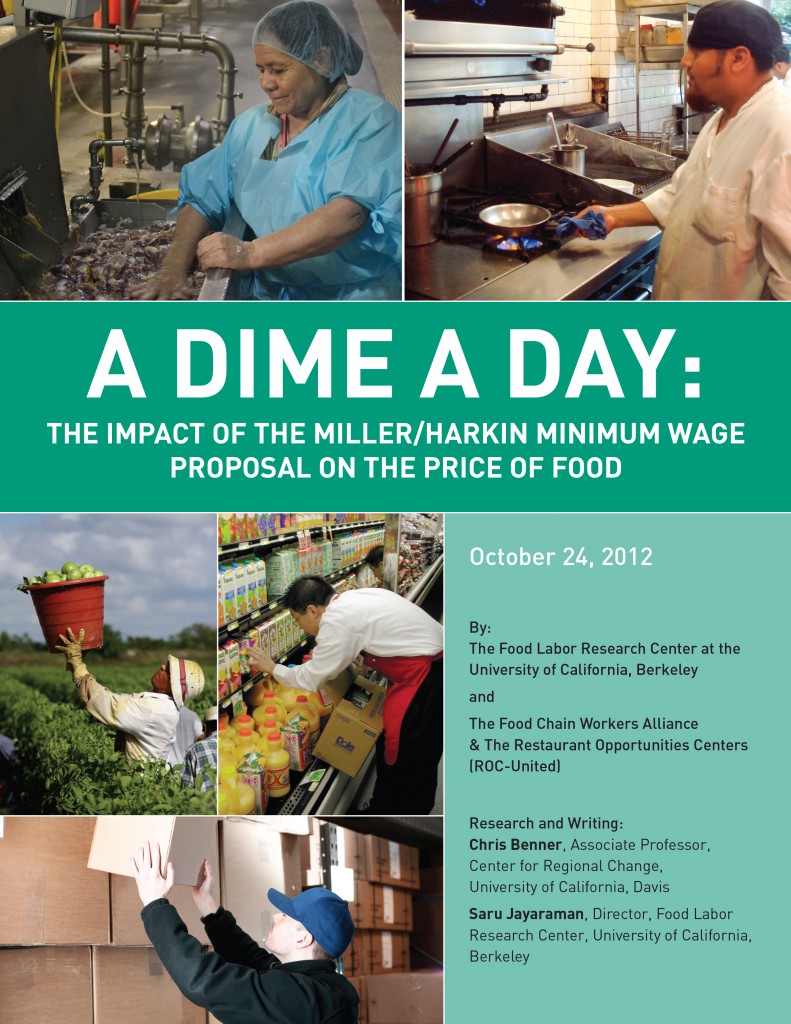 A Dime A Day analyzes the impact of the proposed Fair Minimum Wage Act, introduced in 2012 by Representative George Miller (D-CA) in the House and Senator Tom Harkin (D-IA) in the Senate. This proposal would raise the federal minimum wage from $7.25 to $9.80 per hour over the next 3 years and the tipped minimum wage from $2.13 to 70% of the regular minimum wage. We found that this increase in the regular minimum wage and the tipped minimum wage would have a minuscule impact on food costs. Read more in the report! Published with the Food Labor Research Center of the University of California, Berkeley, and the Restaurant Opportunities Centers United.
A Dime A Day analyzes the impact of the proposed Fair Minimum Wage Act, introduced in 2012 by Representative George Miller (D-CA) in the House and Senator Tom Harkin (D-IA) in the Senate. This proposal would raise the federal minimum wage from $7.25 to $9.80 per hour over the next 3 years and the tipped minimum wage from $2.13 to 70% of the regular minimum wage. We found that this increase in the regular minimum wage and the tipped minimum wage would have a minuscule impact on food costs. Read more in the report! Published with the Food Labor Research Center of the University of California, Berkeley, and the Restaurant Opportunities Centers United.
“Human Rights from Field to Fork: Improving Labor Conditions for Food-sector Workers by Organizing Across Boundaries”
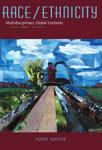 This article published in the latest issue of the journal Race/Ethnicity: Multidisciplinary Global Context focused on “Food Justice.” The article is co-authored by Food Chain Workers Alliance Director Joann Lo and Ariel Jacobson, Senior Associate for Economic Justice at the Unitarian Universalist SerPagesvice Committee, with contributions by Daniel Gross of Brandworkers International, Jose Oliva of the Restaurant Opportunities Centers United, and Diana Robinson of the UFCW Local 1500. This issue of the journal explores the intersection of race and food in the national and global food systems.
This article published in the latest issue of the journal Race/Ethnicity: Multidisciplinary Global Context focused on “Food Justice.” The article is co-authored by Food Chain Workers Alliance Director Joann Lo and Ariel Jacobson, Senior Associate for Economic Justice at the Unitarian Universalist SerPagesvice Committee, with contributions by Daniel Gross of Brandworkers International, Jose Oliva of the Restaurant Opportunities Centers United, and Diana Robinson of the UFCW Local 1500. This issue of the journal explores the intersection of race and food in the national and global food systems.
“Shelved” – Report on California’s Food Retail Industry
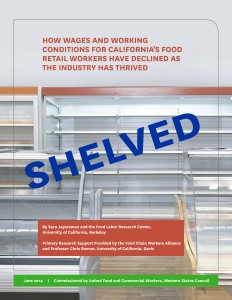 The Food Chain Workers Alliance provided research support for this report by Saru Jayaraman of the Food Labor Research Center at UC Berkeley. “Shelved: How Wages and Working Conditions for California’s Food Retail Workers Have Declined as the Industry has Thrived” is the most comprehensive analysis ever conducted of California’s food retail industry. UC Professor Chris Benner also provided primary research report.
The Food Chain Workers Alliance provided research support for this report by Saru Jayaraman of the Food Labor Research Center at UC Berkeley. “Shelved: How Wages and Working Conditions for California’s Food Retail Workers Have Declined as the Industry has Thrived” is the most comprehensive analysis ever conducted of California’s food retail industry. UC Professor Chris Benner also provided primary research report.
“Temped Out: How the Domestic Outsourcing of Blue-Collar Jobs Harms America’s Workers”
by National Staffing Workers Alliance & National Employment Law Project
From the report: “The employment services industry, which includes both temporary staffing agencies and more permanent employee leasing firms, is expected to rank among the fastest-growing sectors in the country in the next decade. Staffing work is one part of a larger story about the declining middle class in our country. More and more, major corporations are separating themselves from the workers who make their products and supply their shelves by inserting labor intermediaries who are nominally the “employers” of these workers.”
Restaurant Industry Reports by the Restaurant Opportunities Centers United (ROC United)
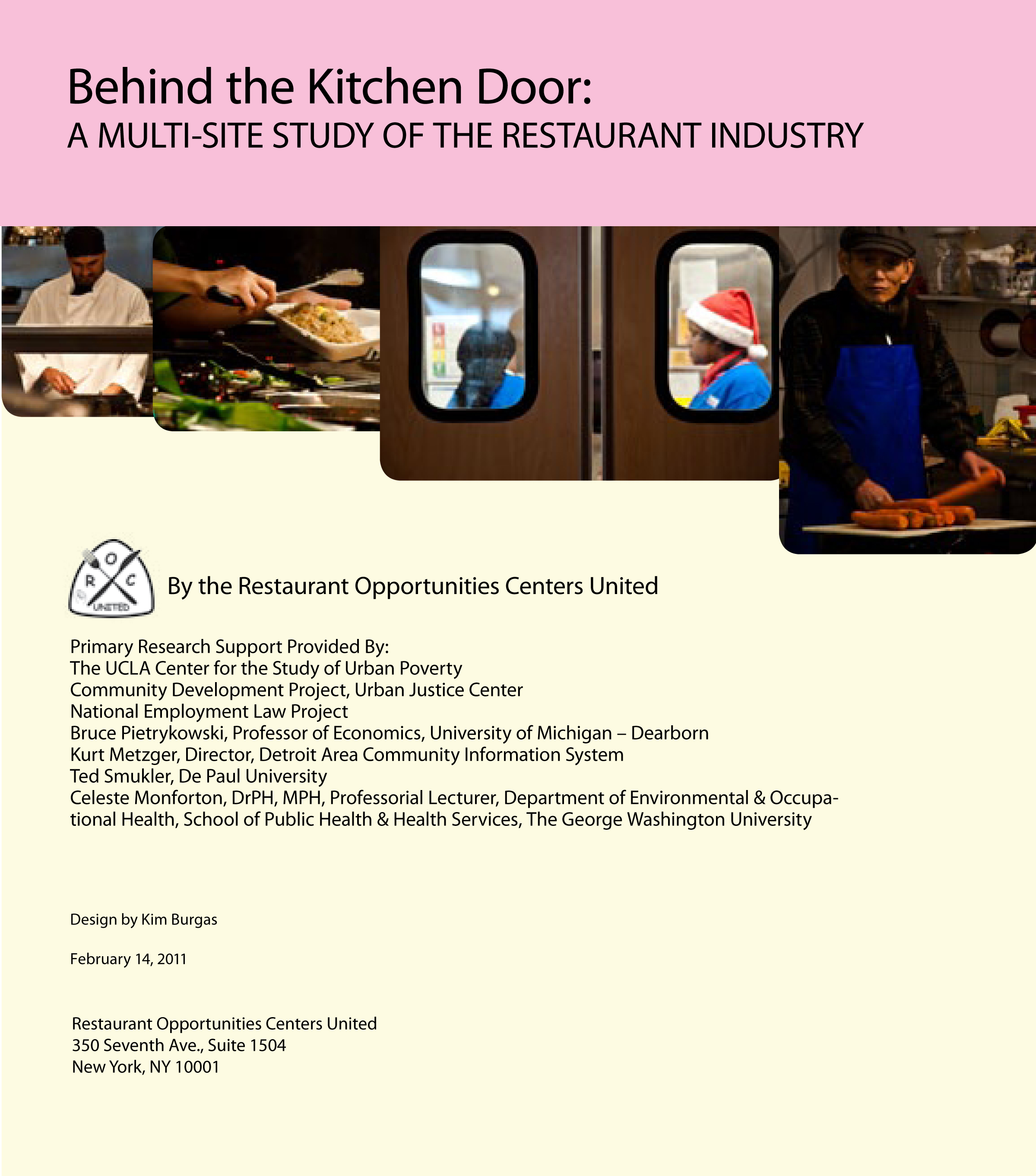 Alliance member ROC United has issued a number of reports on the restaurant industry. You can find all of them on the ROC United website, including:
Alliance member ROC United has issued a number of reports on the restaurant industry. You can find all of them on the ROC United website, including:
- The Executive Summary of Behind the Kitchen Door: A Multi-Site Study of the Restaurant Industry
- Serving While Sick: High Risks & Low Benefits for the Nation’s Restaurant Workforce, and Their Impact on the Consumer
- The Great Service Divide, a study on discrimination and occupational segregation in the New York City restaurant industry
Backbone of Sustainable Food: Food Chain Workers & Their Working Conditions in Vermont
The Vermont Fair Food Campaign (VFFC), a member of the Alliance via the UE Research and Education Fund, released a report in 2013 on food chain workers in Vermont, “Backbone of Sustainable Food: Food Chain Workers & Their Working Conditions in Vermont.” The VFFC report focused on those working in food production, processing, packaging, distribution, and sales. It also included some retail and restaurant workers, though not enough. Ultimately, the story of food workers in Vermont is the story of average working people in Vermont: individuals and families are still struggling, still taking on additional jobs, still coming to work sick, still going without things they need. Food chain workers deserve better.
Work: Path to the Middle Class or Road to Economic Insecurity?
 In this report, University of California professor and warehousing and logistics expert Juan D. de Lara reveals that the local warehousing industry is relying on low-paid, temporary workers at serious risk to the ongoing economic health of the Inland Empire region of Southern California. According the report: “Blue-collar warehouse workers who are hired directly by a retailer or third party logistics company earn a median average wage of $22,000. Temp workers -who are hired to do the same jobs and work at least 20 hours per week – earn a median income of $10,067 per year.”
In this report, University of California professor and warehousing and logistics expert Juan D. de Lara reveals that the local warehousing industry is relying on low-paid, temporary workers at serious risk to the ongoing economic health of the Inland Empire region of Southern California. According the report: “Blue-collar warehouse workers who are hired directly by a retailer or third party logistics company earn a median average wage of $22,000. Temp workers -who are hired to do the same jobs and work at least 20 hours per week – earn a median income of $10,067 per year.”
Good Food Good Jobs
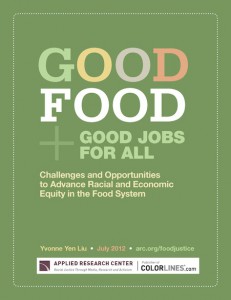 This report “Good Food Good Jobs” released by the Applied Research Center finds stronger collaboration is needed between movements for “good food” and “good jobs” in order to advance racial and economic equity in the food system. Report findings show that low-income people and people of color are most disproportionately, negatively impacted by: obesity, food security, “food deserts,” wage and hour violations, and lack of benefits. Yet, the movements for good food and labor rights do not typically work together towards food justice.
This report “Good Food Good Jobs” released by the Applied Research Center finds stronger collaboration is needed between movements for “good food” and “good jobs” in order to advance racial and economic equity in the food system. Report findings show that low-income people and people of color are most disproportionately, negatively impacted by: obesity, food security, “food deserts,” wage and hour violations, and lack of benefits. Yet, the movements for good food and labor rights do not typically work together towards food justice.
Jobs for a Healthier Diet and a Stronger Economy
by NYC Food Policy Center
This report Jobs for a Healthier Diet and a Stronger Economyexamines current efforts to create new food jobs in New York and explores opportunities for creating additional jobs that provide a living wage and contribute to making healthy food more available and affordable. The report examines the role CUNY can play in creating a good food workforce for New York City.
Green Jobs in a Sustainable Food System
by Green for All
 Green Jobs in a Sustainable Food System (PDF), looks at the potential to create good, green jobs as the food system is becoming a source of sustainable economic development in local communities. With a growing momentum for sustainable food practices, Green For All examines how jobs in the food system will likely be transformed. This initial analysis is promising in that workers will have access to skill-based career ladders.
Green Jobs in a Sustainable Food System (PDF), looks at the potential to create good, green jobs as the food system is becoming a source of sustainable economic development in local communities. With a growing momentum for sustainable food practices, Green For All examines how jobs in the food system will likely be transformed. This initial analysis is promising in that workers will have access to skill-based career ladders.
Injustice on Our Plates: Immigrant Women in the U.S. Food Industry
by Mary Bauer and Monica Ramirez, the Southern Poverty Law Center (SPLC)
 Injustice on Our Plates: Immigrant Women in the U.S. Food Industry documents the workplace experiences of immigrant women who have come to the United States to escape crushing poverty. It describes how the laws that are in place to protect them from exploitation are grossly inadequate and how they are typically powerless to protect themselves. The report is based on extensive interviews with 150 immigrant women from Mexico, Guatemala, and other Latin American countries. They live and work in states across the country. All have worked in the fields or factories that produce food for America.
Injustice on Our Plates: Immigrant Women in the U.S. Food Industry documents the workplace experiences of immigrant women who have come to the United States to escape crushing poverty. It describes how the laws that are in place to protect them from exploitation are grossly inadequate and how they are typically powerless to protect themselves. The report is based on extensive interviews with 150 immigrant women from Mexico, Guatemala, and other Latin American countries. They live and work in states across the country. All have worked in the fields or factories that produce food for America.
Labor Law for the Rank and Filer: Building Solidarity While Staying Clear of the Law
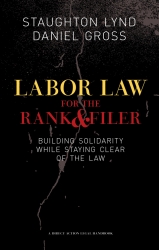 by Staunton Lynd and Daniel Gross. Daniel is Executive Director of Brandworkers International, an Alliance member.
by Staunton Lynd and Daniel Gross. Daniel is Executive Director of Brandworkers International, an Alliance member.
Labor Law for the Rank and Filer: Building Solidarity While Staying Clear of the Law is a guerrilla legal handbook for workers in a precarious global economy. Blending cutting-edge legal strategies for winning justice at work with a theory of dramatic social change from below, Staughton Lynd and Daniel Gross deliver a practical guide for making work better while re-invigorating the labor movement.
Lessons Learned: Solutions for Workplace Safety and Health
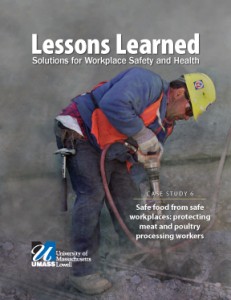 By David Kriebel, Molly M. Jacobs, Pia Markkanen, and Joel Tickner
By David Kriebel, Molly M. Jacobs, Pia Markkanen, and Joel Tickner
Every day in the United States, 14 workers die on the job and millions of workers are seriously injured or sickened by doing their work. The harms to workers, the costs to our healthcare system, and the damages to communities are immense.
Yet many of these injuries and deaths could have been prevented by applying the lessons learned from our country’s history of workplace health and safety. It is a history rich in powerful examples of regulations failing to protect workers as well as policies and practices that enable workers to be healthy and safe. These lessons can be used to create far more effective approaches that not only protect workers but also reduce the harms to society.
To make these lessons clear and useful, the Lowell Center for Sustainable Production has produced Lessons Learned: Solutions for Workplace Safety and Health. The report’s six case studies illustrate systemic failures to protect workers, communities, and the environment. Case Study 6 focuses on Safe food from safe workplaces: protecting meat and poultry processing workers. Download the report for free from the Lowell Center’s website.
Unity for Dignity: Expanding the Right to Organize to Win Human Rights at Work
by the Excluded Workers Congress
 This report provides a cross-sector scan in order to map the landscape of worker exclusion in the United States. It makes a case for the need to establish workplace democracy across many industries. And it paints a portrait of a vibrant labor movement of excluded workers engaging in transformative politics through path-breaking campaigns. The Excluded Workers Congress aims to rebuild a workers movement in this country that can expand the right to organize to include these historically marginalized sectors and improve the working conditions of the most vulnerable workers and thus raise the floor for all workers. You can read the report online or download it.
This report provides a cross-sector scan in order to map the landscape of worker exclusion in the United States. It makes a case for the need to establish workplace democracy across many industries. And it paints a portrait of a vibrant labor movement of excluded workers engaging in transformative politics through path-breaking campaigns. The Excluded Workers Congress aims to rebuild a workers movement in this country that can expand the right to organize to include these historically marginalized sectors and improve the working conditions of the most vulnerable workers and thus raise the floor for all workers. You can read the report online or download it.
Inventory of Farmworker Issues and Protections in the United States
by Bon Appétit Management Company Foundation and United Farm Workers
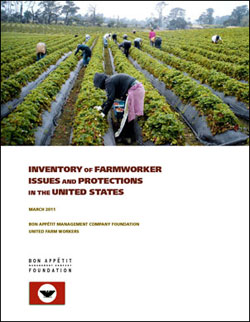 The Inventory of Farmworker Issues and Protections in the United States compiles and analyzes data from multiple federal, state, and private sources to give the most comprehensive picture yet of the reality faced by America’s least-valued but critically important workforce.
The Inventory of Farmworker Issues and Protections in the United States compiles and analyzes data from multiple federal, state, and private sources to give the most comprehensive picture yet of the reality faced by America’s least-valued but critically important workforce.
The report is the first of its kind to detail the lack of laws and protections for crop farmworkers in the U.S., and it is an important step toward addressing the issue of farmworker rights in our business and driving change in the food system. We hope that it will lead to the development of verifiable and enforceable standards for farm work that can be supported by both individual consumers and socially responsible corporations.
The Status of Migrant Farm Workers in Canada: 2010-2011
by UFCW Canada and the Agriculture Workers Alliance (AWA)
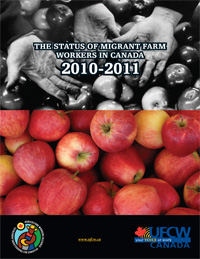 Canada’s most comprehensive annual report on the challenges facing migrant farm workers has been released. It confirms that abuse and exploitation of migrant farm workers are rampant in Canada’s agriculture industry. The latest report is the seventh released since 2003. The 25-page report exposes federally operated migrant farm worker programs as rife with human and labour rights violations — and those programs are expanding with the assistance of the Harper Conservative government. In 2010, more than 40,000 migrant workers toiled in the Canadian agriculture industry. If they raise any workplace, safety or housing concerns, migrant workers are typically repatriated and blacklisted from ever working in Canada again.
Canada’s most comprehensive annual report on the challenges facing migrant farm workers has been released. It confirms that abuse and exploitation of migrant farm workers are rampant in Canada’s agriculture industry. The latest report is the seventh released since 2003. The 25-page report exposes federally operated migrant farm worker programs as rife with human and labour rights violations — and those programs are expanding with the assistance of the Harper Conservative government. In 2010, more than 40,000 migrant workers toiled in the Canadian agriculture industry. If they raise any workplace, safety or housing concerns, migrant workers are typically repatriated and blacklisted from ever working in Canada again.
The 2010-2011 Status of Migrant Farm Workers in Canada report is published by UFCW Canada and the Agriculture Workers Alliance (AWA). For more than two decades UFCW Canada has been a leading advocate for farm workers’ rights, and in association with the AWA operates 10 agriculture worker support centres across Canada.
Tomatoland: How Modern Industrial Agriculture Destroyed Our Most Alluring Fruit
“In fast-moving, tautly narrated scenes, Barry Estabrook tells the startling story of labor conditions that should not exist in this country or this century, and makes sure you won’t look at a supermarket or fast-food tomato the same way again. But he also gives hope for a better future–and a better tomato. Anyone who cares about social justice should read Tomatoland. Also anyone who cares about finding a good tomato you can feel good about eating.” –Corby Kummer, senior editor at The Atlantic and author of The Pleasures of Slow Food
Read an excerpt of the book here.
The American Way of Eating; undercover at Wal-Mart, Applebee’s , Farm Fields and the Dinner Table
After going undercover to labor in the fields of industrial farms, stock groceries at Walmart, and work in the kitchen at Applebee’s, McMillan–called “a voice the food world needs” by the New York Times–has some eye-opening tales to tell about the inner workings of the corporate food system.
Read an excerpt of the book here
Freedom at Work: Democracy and an Economy for All By The International Labor Rights Forum
Freedom at Work lays out why everyone needs to care about the decline of unions and attacks on workers. Among the stories and data in this report, you’ll find great examples of:
- The critical role Tunisian trade unions played in peacefully shepherding in democracy;
- How trade unions are promoting women’s leadership in Latin America;
- How wherever trade union density is greater — in the US or across the globe — voter participation is 15 to 17% higher;
- The extent to which declines in union membership are in lock step with declines in middle class income; and
- How worker organizers continue to find the courage to stand up for labor rights even at risk of great personal peril.
Read the full report here https://laborrights.org/freedom-at-work/resources/freedom-at-work-2012-democracy-and-an-economy-for-all
“Big Business, Corporate Profits, and the Minimum Wage”
 This report by our friends at the National Employment Law Project examines the connection between the opposing extremes of stagnant wages and soaring corporate profits. While a great deal of attention has been directed at the role of Wall Street and the financial sector in driving economic inequality in the U.S., it is important to recognize that the top low-wage employers also bear responsibility for the growing disparity between corporate profits and worker compensation.
This report by our friends at the National Employment Law Project examines the connection between the opposing extremes of stagnant wages and soaring corporate profits. While a great deal of attention has been directed at the role of Wall Street and the financial sector in driving economic inequality in the U.S., it is important to recognize that the top low-wage employers also bear responsibility for the growing disparity between corporate profits and worker compensation.
Health-related Inequities Among Hired Farm Workers and the Resurgence of Labor-intensive Agriculture
By: The Kresge Foundation
This white paper is about America’s 1.8 million hired farm laborers who are among the nation’s most vulnerable employees. They suffer widespread health disparities, including lack of access to health care and health insurance, and are at a greater risk of workplace injury or death. Many also labor without the workplace rights or protection that federal and state laws afford to almost all other workers.
Fresh Fruit, Broken Bodies: Migrant Farmworkers in the United States
by Seth Holmes
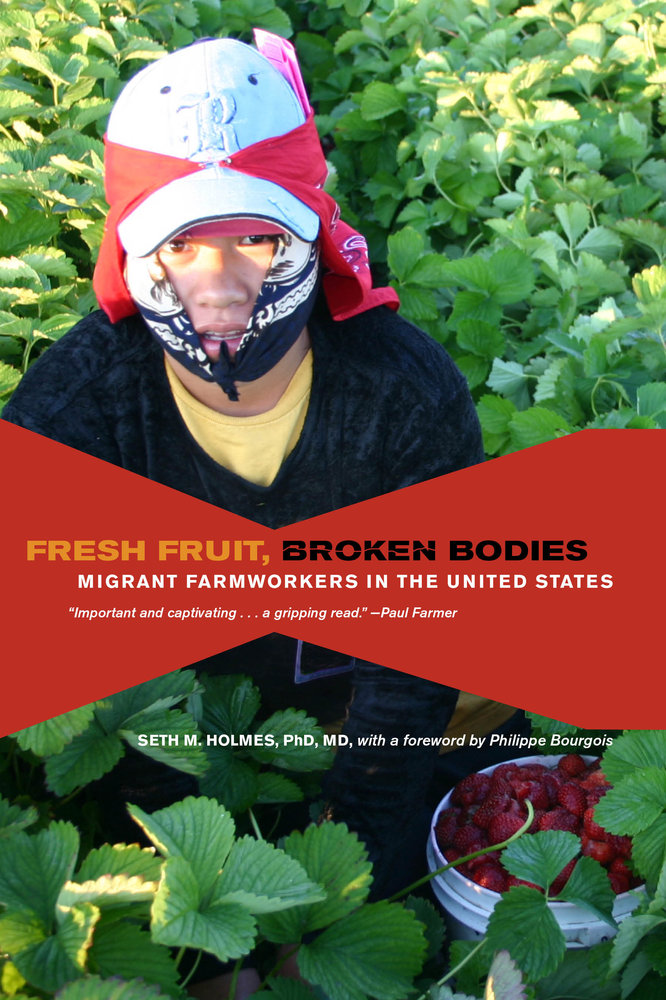 This book is an ethnographic witness to the everyday lives and suffering of Mexican migrants. Based on 5 years of research in the field (including berry-picking and traveling with migrants back and forth from Oaxaca up the West Coast), Holmes, an anthropologist and MD in the mold of Paul Farmer and Didier Fassin, uncovers how market forces, anti-immigrant sentiment, and racism undermine health and health care. Holmes’ material is visceral and powerful–for instance, he trekked with his informants illegally through the desert border into Arizona, where they were apprehended and jailed by the Border Patrol. After he was released from jail (and his companions were deported back to Mexico), Holmes interviewed Border Patrol agents, local residents and armed vigilantes in the borderlands. He lived with indigenous Mexican families in the mountains of Oaxaca and in farm labor camps in the United States, planted and harvested corn, picked strawberries, accompanied sick workers to clinics and hospitals, participated in healing rituals, and mourned at funerals for friends.
This book is an ethnographic witness to the everyday lives and suffering of Mexican migrants. Based on 5 years of research in the field (including berry-picking and traveling with migrants back and forth from Oaxaca up the West Coast), Holmes, an anthropologist and MD in the mold of Paul Farmer and Didier Fassin, uncovers how market forces, anti-immigrant sentiment, and racism undermine health and health care. Holmes’ material is visceral and powerful–for instance, he trekked with his informants illegally through the desert border into Arizona, where they were apprehended and jailed by the Border Patrol. After he was released from jail (and his companions were deported back to Mexico), Holmes interviewed Border Patrol agents, local residents and armed vigilantes in the borderlands. He lived with indigenous Mexican families in the mountains of Oaxaca and in farm labor camps in the United States, planted and harvested corn, picked strawberries, accompanied sick workers to clinics and hospitals, participated in healing rituals, and mourned at funerals for friends.
